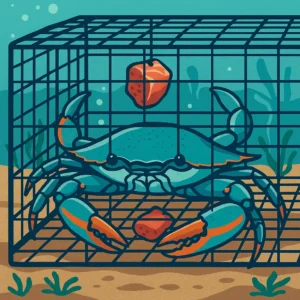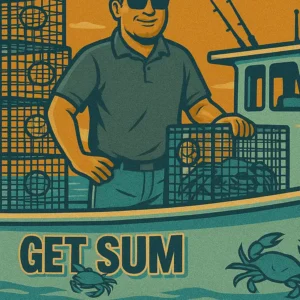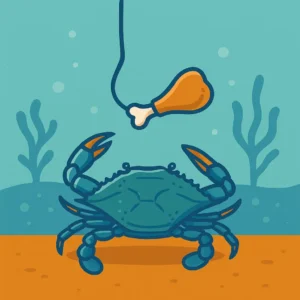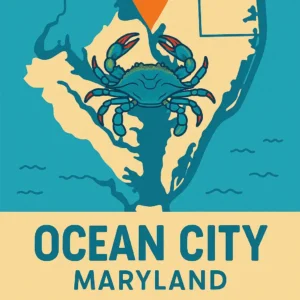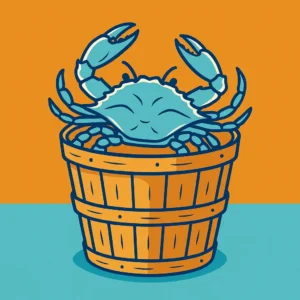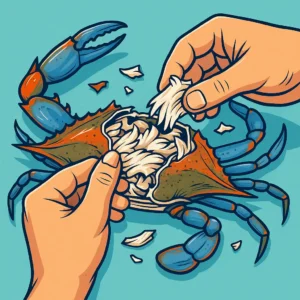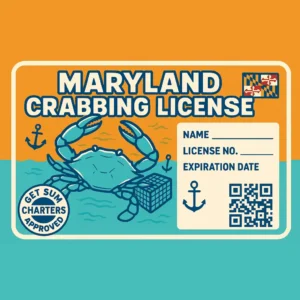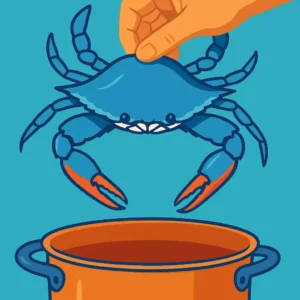How to Use a Trotline to Catch Crabs in Ocean City, Maryland
Crabbing with a trotline is one of the most efficient and exciting ways to catch Maryland blue crabs — and it’s a tradition that runs deep here in Ocean City. If you’re ready to take your crabbing game to the next level, learning to run a trotline is the perfect way to cover more ground and fill that bushel.
Whether you’re a seasoned local or just learning the ropes, this guide will walk you through the basics — from terminology to technique — so you can crab like a pro.
What Is a Trotline?
A trotline is a long, baited line that rests on the bottom of the bay, typically anchored at both ends and strung with bait at intervals of 2 to 6 feet. Unlike hand lines or collapsible traps, a trotline allows you to cover larger areas and crab more efficiently.
According to Webster’s dictionary, a trotline is a variation of a setline — “a long heavy fishing line to which several hooks are attached in series.” The Department of Game & Fisheries defines a trotline as “a line without a rod or reel attached that need not be held in the hand or closely attended.”
While the origins of the term come from the Germanic word trotten, meaning “to tread or run,” in the crabbing world we don’t just check a trotline — we run it. This is part of the lingo that separates seasoned crabbers from the chicken-neckers.
Anatomy of a Trotline: Snoods, Main Line & Anchors
-
Main Line: The long rope that runs the length of your trotline setup, resting on the bottom of the waterway.
-
Snoods (Dropper Lines): Short lines tied to the main line at intervals, holding the bait. Yes, real crabbers call them snoods — and saying it correctly might just earn you a nod from the old salts.
-
Anchors & Buoys: Used to hold the trotline in place at both ends and mark where your setup begins and ends.
The line is typically baited with chicken necks, razor clams, bull lips, or fish heads. When crabs latch onto the bait, you slowly lift the line using a dip net and scoop them up before they let go.
Running a Trotline in Ocean City
Trotlines are best run from a boat, making it ideal for back bays, shallow tributaries, or quieter corners of the Isle of Wight or Assawoman Bay. Recreational crabbers typically start with 100–400 feet of line, while commercial crabbers may run lines up to a mile long!
Running a trotline is a smooth process when done right:
-
Deploy the line carefully, ensuring it’s straight and flat on the bottom.
-
Let it soak — just a few minutes can do the trick.
-
Run the line by slowly driving alongside while lifting the line with a roller or dip net.
-
Scoop the crabs as they appear, ideally from behind — remember, crabs swim backward!
Licensing & Regulations
In Maryland, trotlines are legal for recreational use but do require a valid crabbing license. There are also specific limits on the number of crabs, size restrictions, and gear requirements. Always check current regulations with the Maryland Department of Natural Resources or visit:
MORE CRABBING INFORMATION
- Intro to crabbing
- Where to crab in Ocean City Maryland
- How to Catch Crabs
- What are the regulations for crabbing in Ocean City, Maryland?
- How to cook crabs Maryland style
- How to pick a Maryland blue crab
- How to Handline for crabs in Ocean City Maryland
- How to run a trotline in Ocean City Maryland
- Using collapsible crab traps in Ocean City, Maryland
- Using crab pots in Ocean City, Maryland

